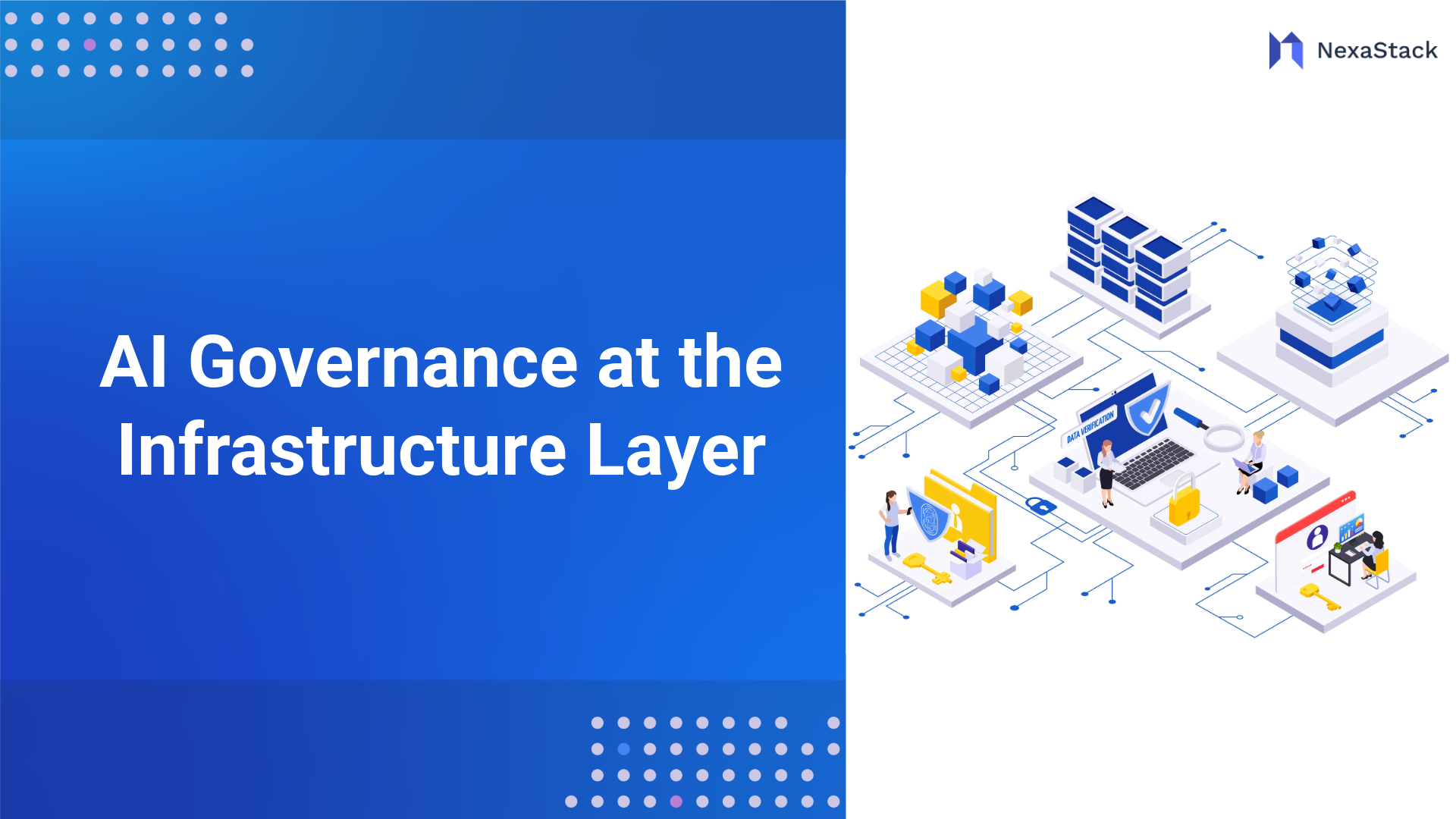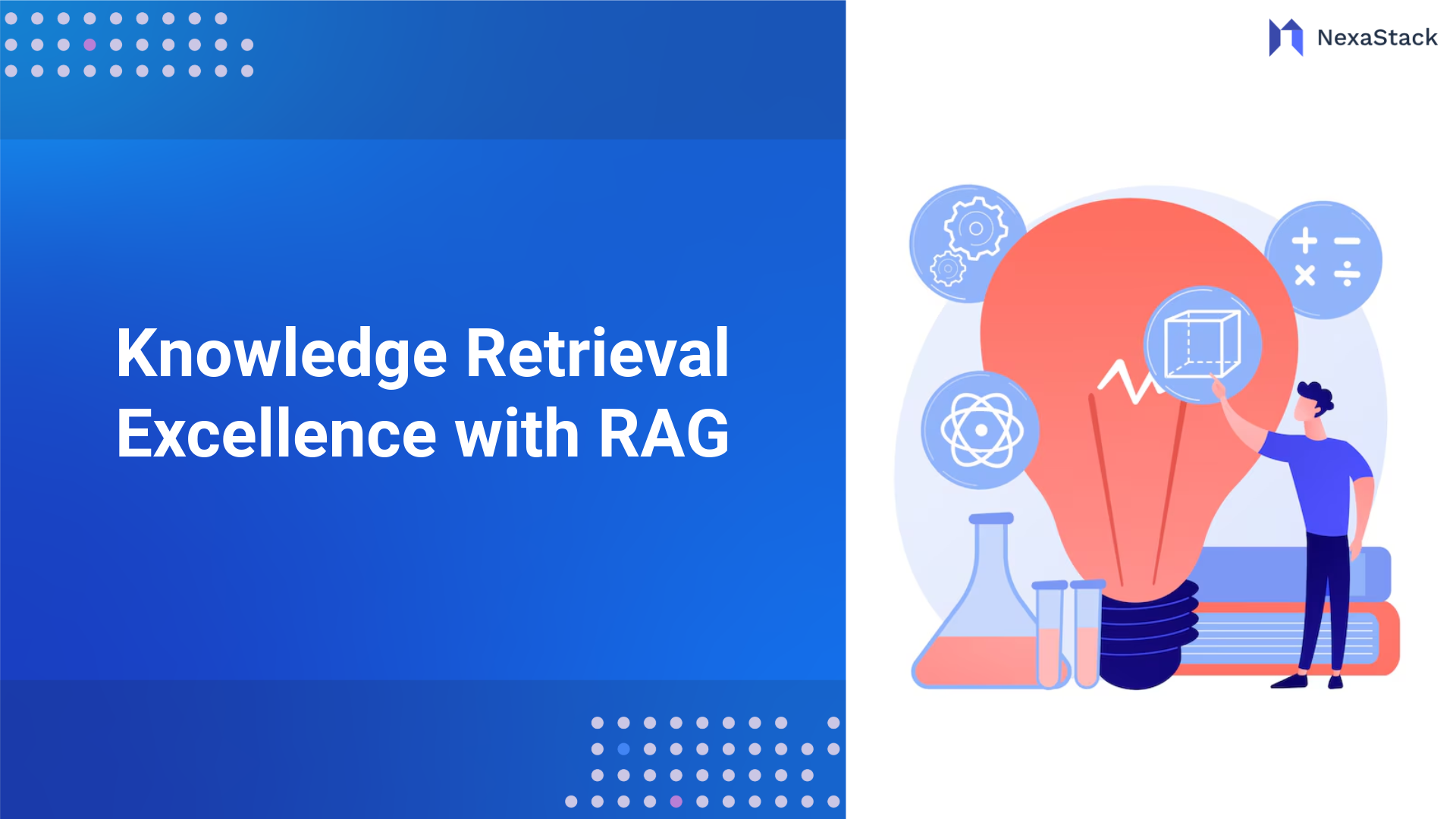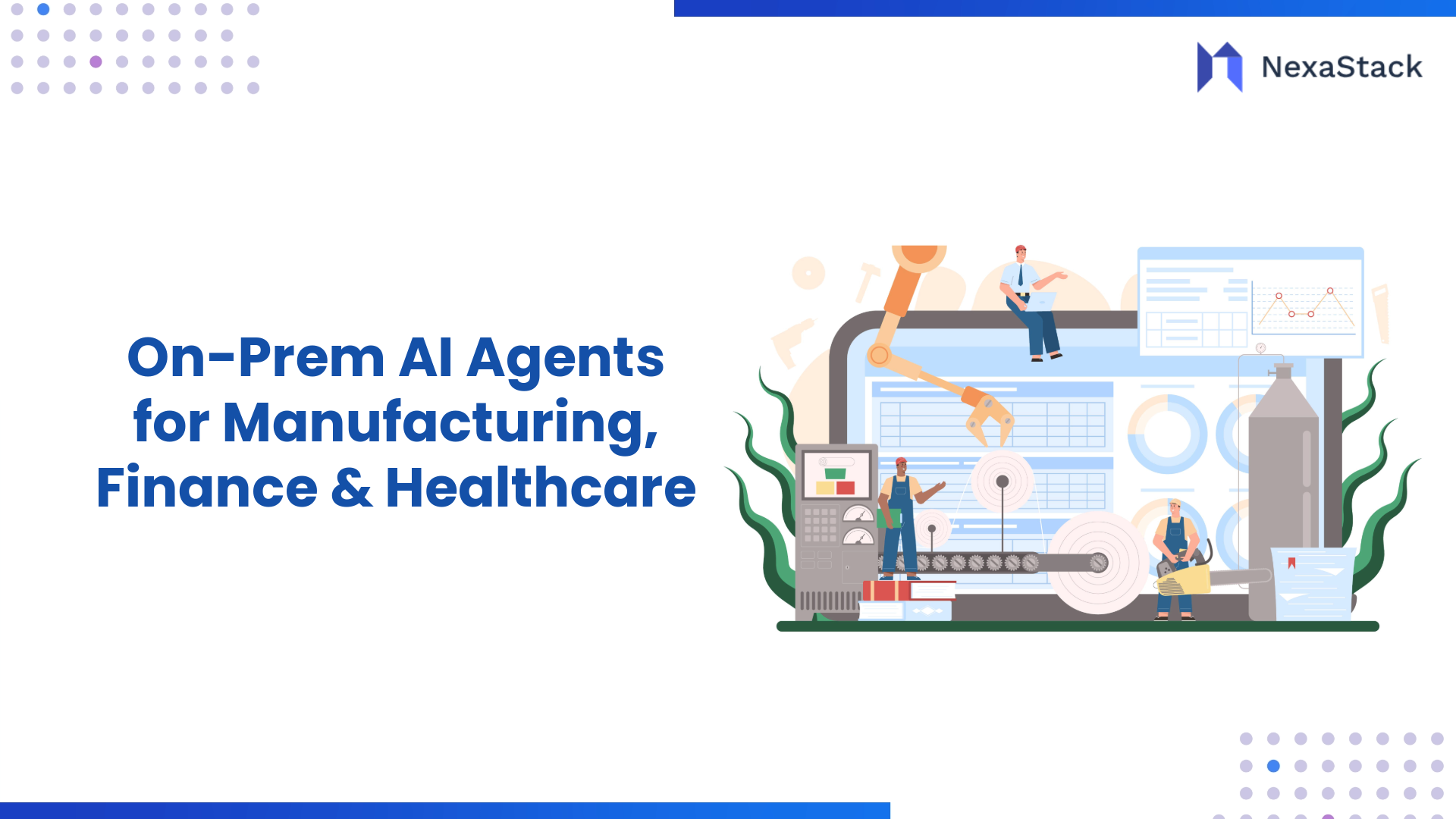As AI adoption grows, many organizations are now choosing to deploy AI agents on-premises—within their own data centers, private clouds, or edge environments. This trend is particularly pronounced in manufacturing, finance, and healthcare, where data privacy, regulatory compliance, and operational reliability are of paramount importance.
Cloud AI offers scale and flexibility, but sending sensitive data off-site or relying on external networks for real-time decisions isn’t always feasible. In environments that demand high security and low latency, the cloud can introduce risks or delays.
On-prem AI agents solve this by keeping intelligence close to the data and operations. They allow enterprises to:
In short, on-prem AI agents enable organizations to automate decisions and improve outcomes without compromising trust, privacy, or performance. 
Fig 1: On-Prem AI Agents Comparison
The Enterprise Shift Toward On-Prem AI
Cloud platforms are excellent for experimentation, prototyping, and large-scale training, but they often fall short in regulated or mission-critical environments. Many enterprises face constraints such as:
This is why organizations are increasingly adopting on-prem AI agents. By running AI directly inside their own data centers, private clouds, or edge environments, enterprises gain:
On-premises AI delivers intelligence where the work happens, enabling automation that is secure, reliable, and operationally aligned—without disrupting the existing environment.
Why Industry-Specific Agents Matter
Generic AI models often lack awareness of the real operational context inside a factory, a trading desk, or a hospital ICU. They may understand data patterns, but they don’t inherently understand how decisions impact production timelines, patient outcomes, or financial risk.
Industry-specific AI agents are trained using domain vocabulary, processes, workflows, and constraints unique to each environment. Because they reflect how the organization actually operates, they deliver:
This is where the actual value of AI emerges. It’s not just about predicting what might happen, but embedding actionable intelligence directly into daily operations, improving efficiency, safety, and outcomes at every step.
Why On-Prem AI Agents?
Data Privacy and Compliance Requirements
Industries governed by HIPAA, GDPR, PCI-DSS, ISO 27001, and other regulations must keep tight control over sensitive data. On-prem deployments ensure data remains within enterprise boundaries, simplifying audits and reducing compliance risk.
Security and Risk Reduction
With data processed internally, the attack surface shrinks. Organizations can apply zero-trust frameworks, granular access controls, and air-gapped environments where needed.
Performance and Cost Considerations
For real-time workflows—such as equipment monitoring, fraud detection, and clinical diagnostics—milliseconds matter. On-prem agents deliver low-latency inference without relying on external networks. Over time, they also reduce recurring cloud data transfer and inference costs.
 On-Prem AI in Manufacturing
On-Prem AI in Manufacturing
Manufacturing environments produce continuous, high-frequency data from machines, sensors, and production lines. On-premises AI agents enable factories to process data locally and respond instantly, thereby improving equipment uptime, product quality, and worker safety, all without relying on external networks.
Predictive Maintenance & Quality Control
Predictive Maintenance
AI agents analyze signals like vibration, temperature, sound, and pressure to identify early signs of equipment wear or failure.
Benefits include:
Quality Control
Computer vision agents inspect products in real time on the assembly line, detecting:
Why On-Prem?
Factory networks often run in isolated or low-connectivity environments, and real-time analysis requires local, high-throughput processing that cloud-only systems cannot reliably support.
Supply Chain Optimization
On-prem AI agents integrate data across production lines, ERP systems, warehouses, and logistics networks to:
Complex supply chains benefit from multi-agent collaboration, where agents simulate scenarios and coordinate decisions across departments or regional plants.
Why On-Prem?
Supply chain and production data often reside in legacy plant systems closely tied to manufacturing workflows. Local deployment maintains security and avoids disruptive architecture changes.
Safety and Compliance Monitoring
AI agents support worker and facility safety through:
These systems also auto-log incidents for compliance with OSHA, ISO 45001, and other regulatory frameworks.
Why On-Prem?
Safety monitoring must remain operational even if external connectivity fails. Local processing ensures a fast and reliable response in critical situations.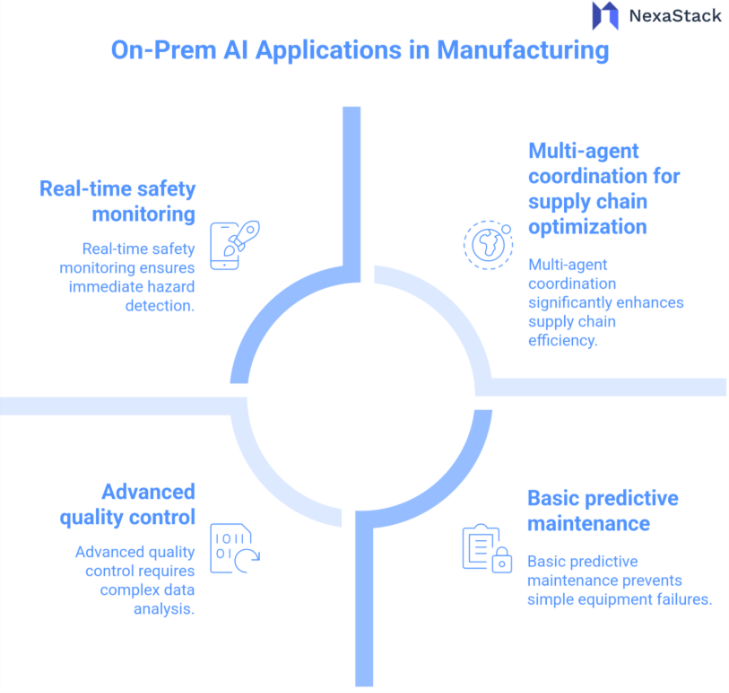
Fig 3: On-Prem AI Applications in Manufacturing
On-Prem AI in Finance
Financial institutions must automate intelligently while maintaining trust, transparency, and regulatory certainty. On-prem AI agents help strike this balance by keeping sensitive data within the institution and ensuring every decision can be audited and explained.
Fraud Detection and Prevention
AI agents continuously analyze data streams—such as ATM withdrawals, card transactions, mobile banking behavior, and internal ledgers—to detect unusual patterns and relationships that could indicate potential fraud. These systems can adapt to new fraud tactics as they emerge.
Why On-Prem?
Risk Modeling and Regulatory Compliance
On-prem agents support risk and treasury teams by helping to:
They also automatically generate audit-ready logs and compliance documentation for frameworks such as Basel III, SOX, and MiFID II.
Why On-Prem?
Regulators require fully traceable and explainable decision-making processes, and banks must maintain complete control over model updates and approval workflows.
Customer Service Automation with Secure Agents
Secure AI chat and voice agents can streamline customer interactions, including:
Because these agents run on-prem, PII and financial data never leave the organization, preserving customer trust and meeting data residency requirements. 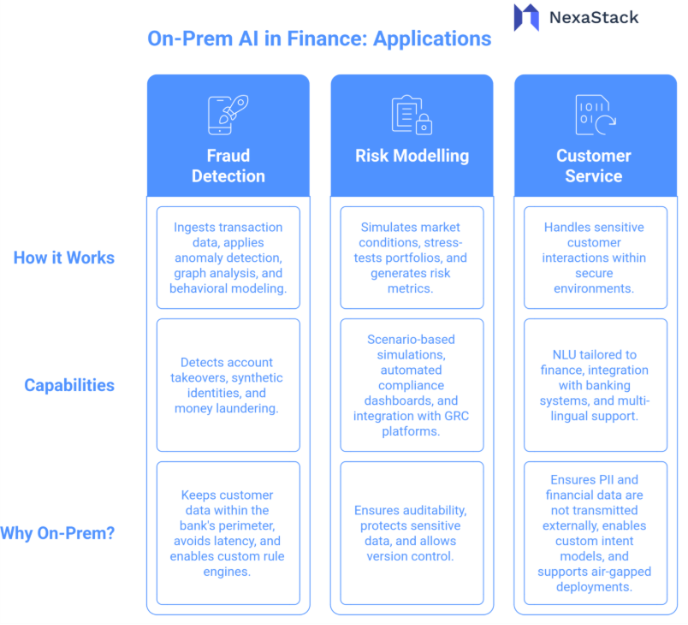
Fig 4: On-Prem AI in Finance: Applications
On-Prem AI in Healthcare
Healthcare environments require precision, privacy, and reliability. On-premises AI agents enable hospitals and clinics to utilize advanced intelligence for diagnosis and operations without sending sensitive patient data outside their secure infrastructure, thereby preserving trust and ensuring regulatory compliance.
Patient Data Security and Compliance
Keeping AI workloads inside hospital networks helps ensure alignment with healthcare regulations, such as:
This is especially important for high-sensitivity data, including diagnostic imaging, lab results, and EHRs, where any data exposure could have legal or ethical consequences.
AI-Driven Diagnostics and Clinical Support
On-premises AI agents can support clinicians in real-time. Common applications include:
Because medical imaging and sensor data are large and decisions often require immediate feedback, processing data locally avoids latency and ensures reliability—something cloud-only systems can’t always guarantee.
Optimizing Hospital Operations
Beyond clinical use, AI agents can improve the efficiency of hospital operations:
Running these agents on-prem ensures that critical operations remain uninterrupted, even if internet connectivity is unstable or external cloud services are down—supporting consistent patient care delivery.
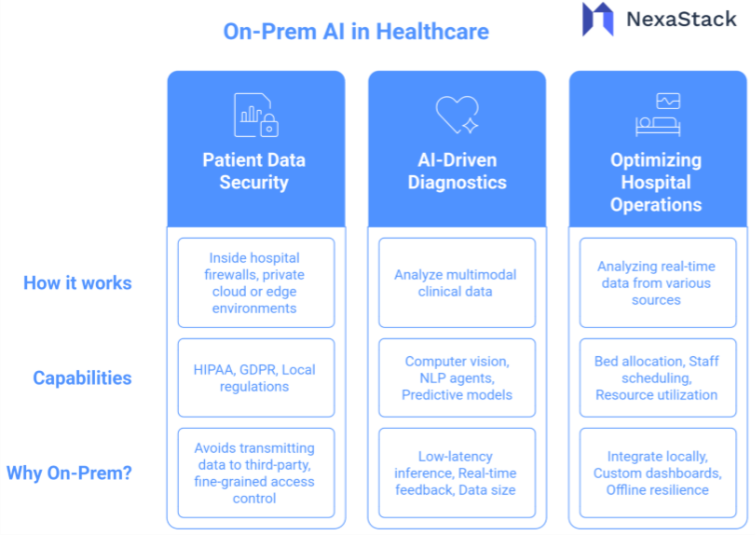
Fig 5: On-Prem AI in Healthcare
Cross-Industry Benefits of On-Prem AI Agents
Standardized Compliance Frameworks
On-premises AI agents seamlessly integrate into existing governance, risk, and compliance (GRC) workflows, providing a unified approach to managing risk. They support clear audit trails, automated policy enforcement, and easier model explainability—making regulatory reporting and internal validation more straightforward across manufacturing, finance, and healthcare environments.
Integration with Legacy Systems
Many critical systems—such as ERP, EMR, MES, and core banking—were never designed for the cloud. On-prem agents can connect directly to these systems, accessing real-time operational data without risky migrations or significant architectural changes. This reduces project friction and accelerates implementation.
Enhanced Trust and Transparency
Because the entire AI stack remains under the organization’s control, teams maintain visibility into:
This transparency fosters trust among compliance teams, executives, industry regulators, and even customers, supporting the broader and more confident adoption of AI over time.
On-prem AI isn’t just a technical task. It requires AI/ML, security, MLOps, and domain expertise working together. Most teams will need focused upskilling or targeted hiring to support long-term operations effectively.
Enterprises are moving toward hybrid AI, where real-time, sensitive inference runs on-prem, while cloud is used for training and long-term analytics. This balances privacy, performance, and scalability, enabling organizations to maintain control over critical data while still reaping the benefits of cloud-driven innovation.
AI agents are shifting from fixed logic to continually learning systems. With reinforcement learning, agents will adapt to real-world changes—optimizing production, adjusting trading decisions, or supporting clinical workflows. Multiple agents will increasingly work together, coordinating decisions across operations with less manual oversight.
This enables organizations to move beyond isolated pilots toward standardized, enterprise-wide adoption of AI, ensuring consistency and reducing operational fragmentation.
On-prem AI agents are not just another technology trend—they represent a new operating model where intelligence is embedded directly into the core of business operations.








